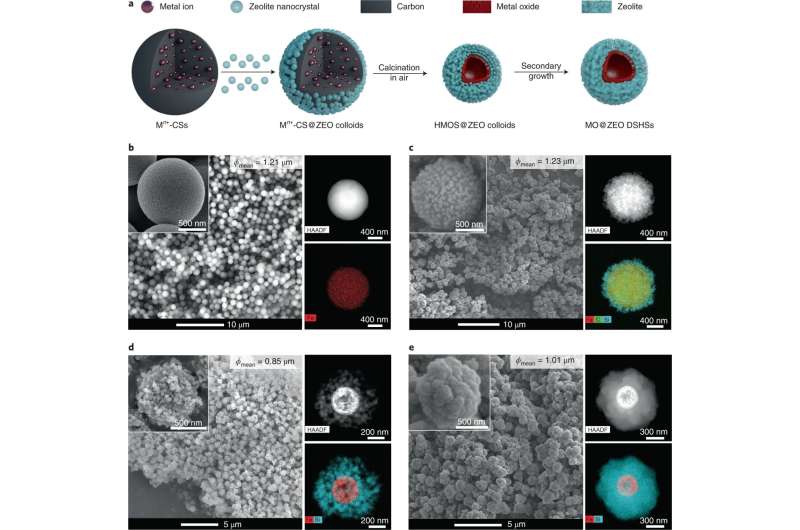February 16, 2022 report
Double-shelled hollow spheres for use as tandem catalysts

A team of researchers from the Netherlands, China, Belgium, Japan and the U.S. has developed a double-shelled hollow sphere that serves as a tandem catalyst. In their paper published in the journal Nature Materials, the group describes the spheres and their use in converting hydrogen and carbon monoxide into a liquid hydrocarbon.
As the researchers note, other chemists have created tandem catalysts, single catalysts that can be used to instigate two or more reactions, using zeolites and metal oxides, but their structures were generally random, limiting their usefulness. In this new effort, the researchers have created a tandem catalyst with a stable structure.
The double-shelled hollow spheres were created by starting with a ball-shaped carbon structure containing metallic ions—it served as the inner layer of the final sphere. The researchers then covered the ball with zeolite nanocrystals and then finished by applying a layer of calcinate. They noted that the thickness of the calcinate layer could be modified, allowing for different types of reactions. The resulting double-shelled sphere could then be used as a tandem catalyst. As an example, they conducted a Fischer-Tropsch process by using a batch of their spheres to convert syngas (carbon monoxide mixed with hydrogen) into a waxy hydrocarbon and then to convert the hydrocarbon into a liquid fuel.
The double-shelled approach works because it allows one layer of the sphere to interact with a chemical while the other layer interacts with another chemical. It is similar in some respects to time-release drugs—as acids in the stomach eat through layers of a capsule, more or different drugs are released.
The researchers note that the process of creating the catalysts is clean, simple and tunable. The thickness of either or both layers can be applied to suit the needs of individual reactions. They note also that the process allows for producing a branched-type gasoline, which prevents knocking in engines.
The researchers tested their spheres against several other more conventional catalysts and found that their double-shelled approach outperformed all of them.
More information: Jiadong Xiao et al, Tandem catalysis with double-shelled hollow spheres, Nature Materials (2022). DOI: 10.1038/s41563-021-01183-0
Journal information: Nature Materials
© 2022 Science X Network




















